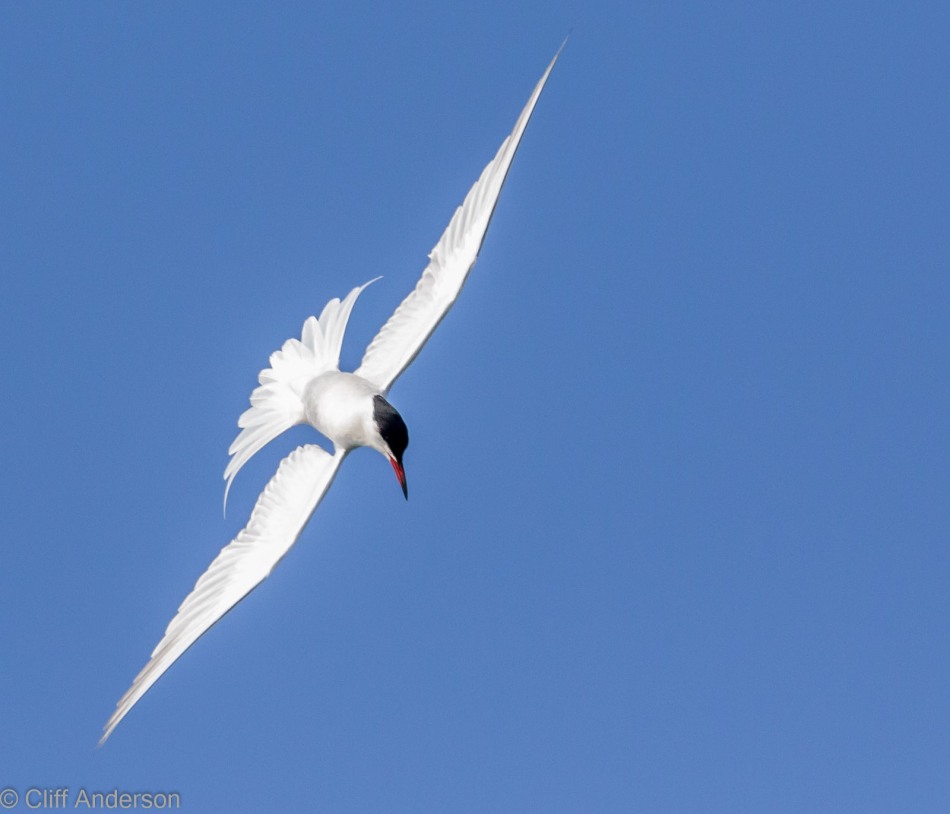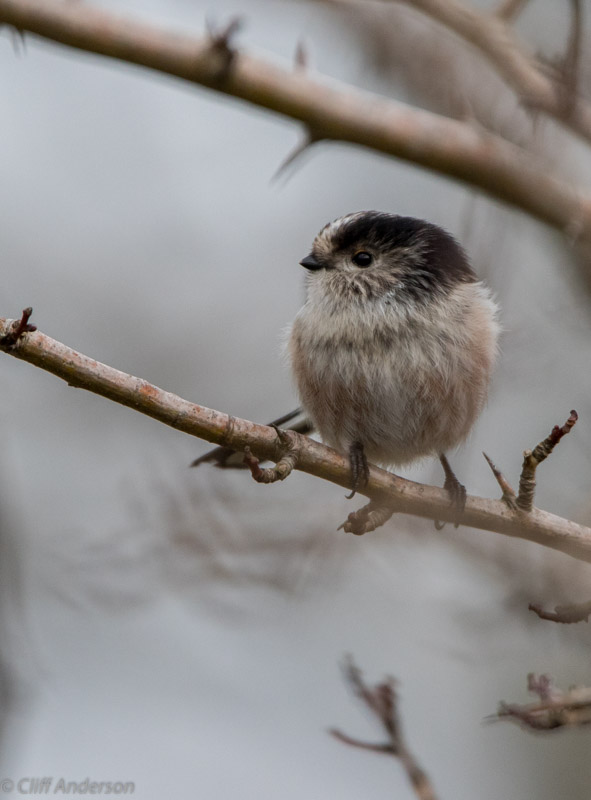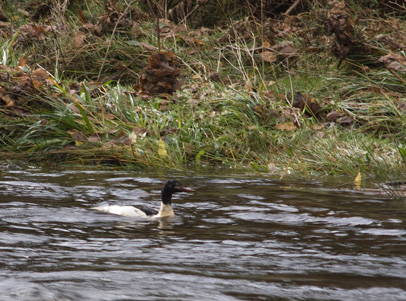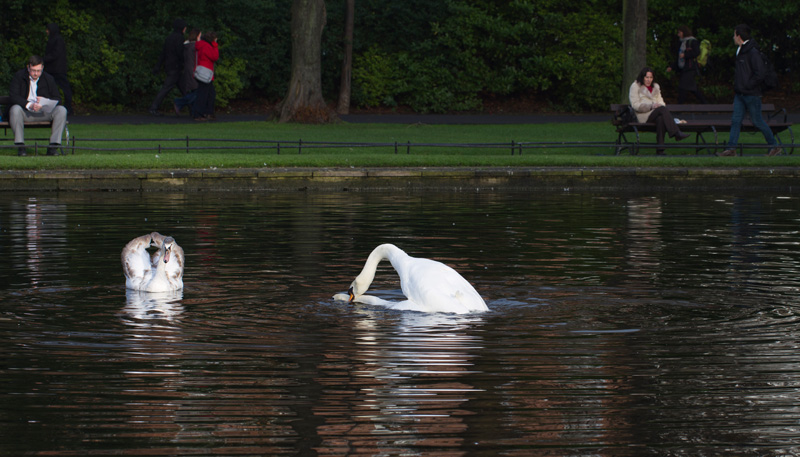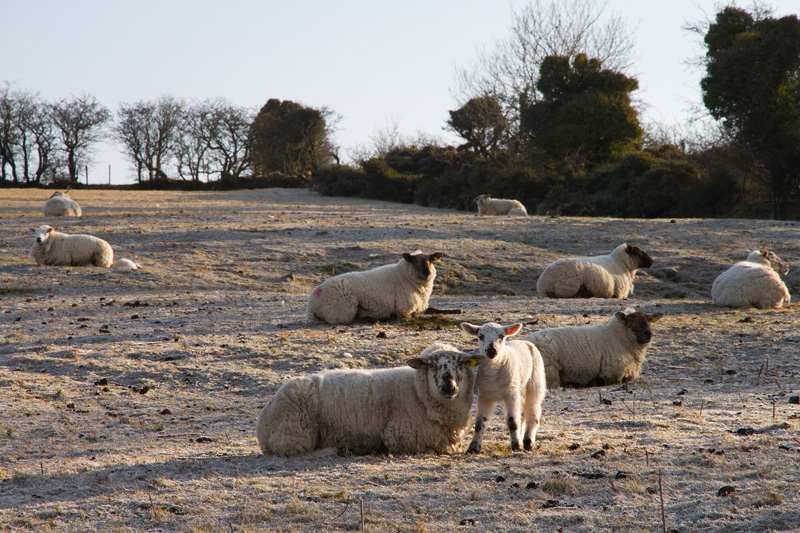Garden Bird Parade – Who’s the prettiest?

This Garden Bird Parade is designed to decide the most handsome of the common birds in Irish gardens. Larger birds like Wood Pigeons and Magpies are excluded. Similarly Fieldfares, Blackcaps, Redwings etc., although very handsome, are excluded because they are not seen in enough Irish gardens.
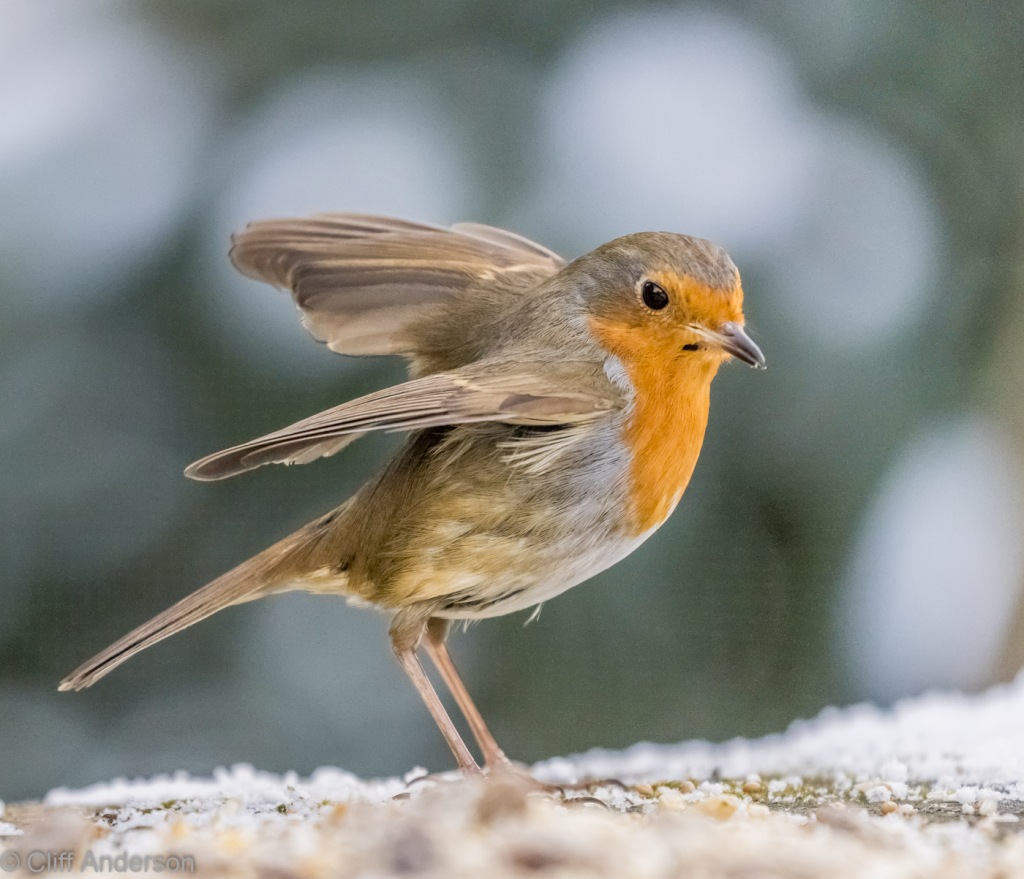
First onto the ‘catwalk’ is the Robin, resplendent in brown suit with stunning orange-red bib and forehead, edged with grey. A good-looker with charm and courage. A favourite with many garden lovers.

Next up is the cheeky, agile and impossibly cute Blue Tit. He certainly is Blue! but he also shows a delightful weak yellow contrast and white face with a black eye stripe. Probably hard to beat.

A change of tone now as a more understated but perfectly presented candidate confidently takes the stage – The Greenfinch. The subtle Olive Green body suit with a dark eye mask brings the understatement but then there’s that dazzling flash of yellow from the wing. Definitely a garden beauty.

Staying on the understated theme comes the Black Tie dressed Blackbird. A beautiful classic all black colour with a super sheen, depending on the light. But once again the whole outfit is set off by a brilliant yellow beak and throw-back yellow eye ring. One of the commonest birds in Ireland but if talent is a factor, the Blackbird’s song is a delight.

Enter the Godfather. Male and Female Bullfinches show incredible colouring. However the strongly contrasting orange chest and Black Cap and face, together with white underside raises the male to a different level. Even the rain in the picture above, can’t diminish the shock effect.

Making a come-back is the snail-cracking, worm hunting, Song Thrush. Sharply dressed in Brown with Brown arrow heads decorating a white chest, this is a good looker. And if the Blackbird has a lovely voice, the Thrush’s song is golden.

Sweeping in with the family in tow, all full of giggles, is the Long-tailed Tit. Cute and cuddly like the other Tits, these have a more elegant tone, classic lines and the tail seems to balance the look. Black and white but with a pink flush to the back and sides, the overall effect is transfixing.
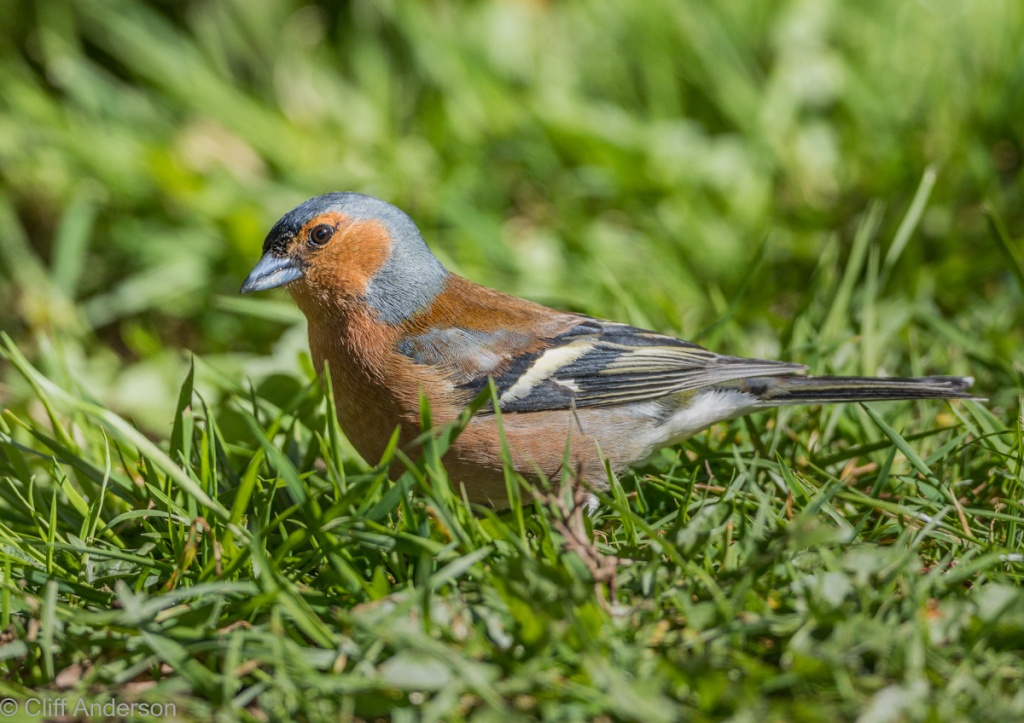
Give a big hand for the Chaffinch. Wow, up close and personal, the Chaffinch shows quite a range of colours from Grey on the head to orange on the face and chest, brown on the back and black and white markings on the wings with a touch of olive green-cream. Another contender for commonest bird in Ireland that deserves a close look.

Finally strutting his or her stuff is the striking Goldfinch. Goldfinches have been turning up at more and more gardens and striking is the apt term. Coated in a beautiful soft brown that tapers to white on the chest, with dark black markings on the wings and back and a bright yellow lightning strike on the wings, this is a very handsome bird The shocking red on the forehead and chin is merely the ‘Cherry on top’!
So there you have it – a show of beauty and defiance, with agility and subtlety. You might have a completely different set of favourities and we haven’t included beauties such as the Redpoll, the Siskin or the Goldcrest which are not seen in so many gardens.
For me, they are all beautiful and while beauty is definitely in the eye of the beholder, my top favourites are the Long-tailed Tit, the Bullfinch and the Goldfinch though I could make a good case for the others. In the end my 1,2,3 are:
3: The Goldfinch – one of the most stunning birds;
2: The Long-tailed Tit – probably the favourite for long-term watching and
1: The Bullfinch – it is just too hard to ignore the sumptuous orange-red chest balanced by the classic black head and grey back. On the other hand I could easily reverse 1 and 2 🙂
So do you have a favourite? Would you pick a different winner or maybe a different list altogether?
The Young Ones

 One positive aspect of the Covid-19 pandemic seems to have been increased freedom, activity and production amongst the wildlife, presumably because of less interference during lock-downs. Of course we probably noticed nature more as well.
One positive aspect of the Covid-19 pandemic seems to have been increased freedom, activity and production amongst the wildlife, presumably because of less interference during lock-downs. Of course we probably noticed nature more as well.
In our garden, quite a few nests and young birds were produced. This included quite a few Great Tits, paler and duller than their parents. They are still dominating our feeders.

Every year we have baby robins. This one is more like a teenager, beginning to develop a red chest.
 Our tired-looking Starling box produced 2 broods again.
Our tired-looking Starling box produced 2 broods again.
 The Blackbirds had a rough time. Sparrowhawks seem to have been at least part of the problem. One nest was abandoned when the male was killed and a second nest which we think was by the same female with a different partner, only managed to produce one fledgling before the nest was ransacked by an unknown creature. Still quite a few young blackbirds are running around the gardens, so some nests must have had more success.
The Blackbirds had a rough time. Sparrowhawks seem to have been at least part of the problem. One nest was abandoned when the male was killed and a second nest which we think was by the same female with a different partner, only managed to produce one fledgling before the nest was ransacked by an unknown creature. Still quite a few young blackbirds are running around the gardens, so some nests must have had more success.

House Sparrows were supposed to be declining but not around here! A clatter of babies make a right din in the bushes and on the feeders. This one shows its soft, expandable skin that allows the beak to open wide for feeding. One pair of Sparrows successfully fledged healthy young ‘uns in our camera nest-box, designed for Tits. And they managed to block the camera with a scrappy grassy nest, so we couldn’t even see inside!

Chaffinches tend to feed in the garden by looking for scraps under the feeders. The juvenile above, paler than the female adults, learnt to do the same.

The big excitement for us this year was the appearances of a male adult great-spotted Woodpecker on the nut feeder. Excitement reached a new level when a juvenile, complete with red head, appeared later on. The expansion of these beautiful birds in Ireland continues 🙂

Baby Wren being stubborn!
Many other young birds brightened the gardens including Blue Tits, Rooks, Jackdaws, Goldfinch and more but the highlight for me was a family of wrens. One parent seemed to be in charge of 5 little divils that followed in the bushes but were always straggling, as the parent called to cajole them on.
Tenerife


There are many places with more wildlife than Tenerife but with the current restrictions due to the CV-19 Virus, I thought it might cheer us all up to think about somewhere warm and inviting!
And there are many birds and animals here although I confess that we were there for a short sunny holiday late last year 🙂 So the birds and animals in this post are those found easily – without using binoculars or spending hours in a hide. Also we were only on the West coast of the island.
If you walk around the shore you are almost certain to see many Red Rock Crabs. They are quite large and very colourful. This one, like most, was at the edge of the rocks waiting for the next wave to wash over him bringing tit-bits of food. 
There are a number of birds that can be seen elsewhere including waders like this Turnstone bathing in a pool on the rocks.
As an island off Africa, a boat trip is essential. I thoroughly recommend WWT – Whale Watch Tenerife. They have a fast rib with few passengers and are very knowledgeable and keen and care about the animals. There is a very good chance of seeing Short-finned Pilot Whales as the W coast of Tenerife is a favoured haunt. Dolphins, Sharks and Baleen Whales are also regularly seen.
While enthralled by Dolphins and Whales, keep one eye open for birds. This is a Cory’s Shearwater which is quite common. It flies beautifully but looks a bit awkward in the water or on land – one landed on the path at our feet one evening!
Many of the harbours have large numbers of Flathead Grey Mullet swimming around the boats and shadows. Quite a few of the birds and animals are either species or subspecies endemic to the island or region. This is the Southern Tenerife Lizard (Gallotia galloti galloti) sun-bathing on the rocks along the coast.
Quite a few of the birds and animals are either species or subspecies endemic to the island or region. This is the Southern Tenerife Lizard (Gallotia galloti galloti) sun-bathing on the rocks along the coast.
Finally, there are nearly always Gulls. This is the Yellow-legged Gull, subspecies atlantis, found on Atlantic islands.
Stay safe.
Blessington Basin


Hooded Merganser drake and Mandarin duck
It’s always great to have wild places in cities. This one is a super water oasis in the middle of Dublin. The ‘Blessington’ in the name comes not from the town in Wicklow but from Blessington Street, in Dublin. It is reached on one side from a linear park that used to be a canal, through a small gate in the surrounding stone wall.
This gives rise to its other name as ‘Secret Garden’. At the other end is a more salubrious entrance, gate and lodge, dating from 1811.
At the other end is a more salubrious entrance, gate and lodge, dating from 1811.
The ‘Basin’ itself is a fairly simple, rectangular tank with vertical walls and an island at its centre. This was originally built in 1810 as a water reservoir (The Royal George Reservoir) for Dubliners and was used by a number of whiskey makers into the 1970s. Restoration in the 1990s cleaned it up and it is now well visited by people and wildlife.
 Visiting from the secret end, the first wildlife encounter may well be a pigeon. Feral pigeons know how to find feeding spots and this is a good one with some very regular patrons. They will line up on railings and take off together at the slightest hint of danger or new food, with an alarming beat of wings.
Visiting from the secret end, the first wildlife encounter may well be a pigeon. Feral pigeons know how to find feeding spots and this is a good one with some very regular patrons. They will line up on railings and take off together at the slightest hint of danger or new food, with an alarming beat of wings.
 However the Basin often holds some surprising bird-life such as the Hooded Merganser drake and Mandarin duck in the top picture and the Wood duck above.
However the Basin often holds some surprising bird-life such as the Hooded Merganser drake and Mandarin duck in the top picture and the Wood duck above.
These are normally found in North America but have presumably found their way here after being discarded by collectors.

Immature Sparrowhawk in tree on the island
Keep an eye out for birds of prey – where there are birds feeding, predators lurk.
For me the star of this show was the male Hooded Merganser which just looks so proud and ‘kingly’, somehow beyond normal reality.
And that’s just what’s so fantastic about the Basin – it is a common haunt of locals and aficionados while at the same time an incredible revelation, haven and uplifting surprise for newbies.

Snowed-in – New Neighbours
Have you ever walked through a marshy area and been shocked by a sudden explosion of feathers at your feet, which then disappeared off at full speed with a zig-zag flight? This is the culprit but I didn’t think we’d ever see one in our back garden!

Snipe walking in back garden
In fact we have 2 Snipe – a brace. They have discovered that amongst the acres and acres of deep snow around here, there is one spot where the the snow is thin enough for their long beaks to reach into the soil – our old trampoline!

Snipe foraging under trampoline
There are a lot more birds in the garden than usual, drawn by the need to find food and by our feeders and seed strewn-steps etc. Today we had a Pied Wagtail our our doorstep.
It all looks cute and is great for close views of birds we seldom see close up but many birds will die during this spell. Indeed many people will suffer with some main and most side roads closed.
So be safe and help your neighbours – feathered and otherwise 🙂
Crows

 Some of the commonest and noisiest birds are in the crow family.
Some of the commonest and noisiest birds are in the crow family.
Found in most regions of the world they tend to be medium to large sized, intelligent, mainly blackish in colour and relatively brave around people.
Here in Ireland, the Jackdaw is one of the most visible members of the family which numbers approximately 40. Its white eye ring and mixture of black and grey feathers making it easily identifiable.



Slightly bigger are the Rooks which often mingle with Jackdaws.
They are much tougher looking and have a strong beak with a whitish patch at the base. They also show a dark blue tint when the sun shines.
They make untidy large nests in colonies known as rookeries, in the tops of trees in whereas the Jackdaws nest in holes, such as in trees or chimneys.
.
.
The biggest of our crows is the Raven with a wingspan of up to 1.3m. These are birds of higher ground, mostly scavenging on dead animals.
.
.
The other typical Grey-Black crow we have is the Hooded Crow. It is very similar to the Carrion Crow, found in England, which does not have any grey.
This is the main crow in many European continental countries.
Hooded Crow pairs nest on their own in tops of tall trees.

However, another common crow here is the Magpie – a really beautiful bird but with a bad reputation due to their success in towns and dominance over small birds.

Reasonably common but not seen as much is the Jay which has much less black in its plumage.
It is predominantly Brown with patches of blue, black and white and is most often seen in woods, particularly Oak woods.
The final Irish Corvid is the least known but possibly the most interesting and certainly my favourite. The Chough is similar in some ways to the Jackdaw but has red legs and beak. Also the beak is thinner and down curved – designed for poking into the ground.
The best places to see these are along the South and West coasts. They will probably be noticed first by their unusual ‘chough’ calls.
That’s a reasonable number of ‘Crows’ for a little country. In a blog to follow, some of the other crows will be highlighted.
Saltees 2017
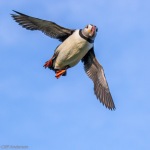

Gannets Greeting in Great Saltee colony over Egg in Nest
Great Saltee Island off the SE coast of Ireland is the place to go in May or June – or most times of the year.
But in early Summer the flowers and birds are terrific.
It seems to have its own micro-climate and has been kind, weather-wise, to us on our yearly pilgrimages.
We spent 4 or 5 hours on the island but could have spent 4 or 5 days without doing it justice.

Puffin taking off from Burrow with undelivered fish after disturbance
———————————————————-

Penthouse Suite – Kitiwakes nesting on cliff, Great Saltee
It is known best for its 2 Gannet colonies and for its Puffins but has so much more – birds such as Auks, Waders, Gulls, Cormorants, Choughs, Pipits etc. as well as Seals, Rabbits (inevitably), wild flowers and great views.
——————————————————–

Razorbill flying with fish

Baby Great-Black-backed Gulls in hiding – they will grow to become the marauding Lords of the island
.

Great Black-backed Gull in full marauding flight

Shag & Chicks in nest under Rock

Grey Seal immature in cave, Great Saltee

Gannet collecting vegetation for nest
.
.
The Gannets number over 2,000 and try to nest away from interference – one colony on a rock stack and the other at the extreme end of the island.
However over-enthusiastic visitors and camera holders constantly get too close, pushing the colony back and causing unnecessary stress and disturbance.
Gannets build a small mound of earth and vegetation – grass, seaweed, etc. – with more vegetation on top.

Gannet Nests with regular spacing
In such a crowded place, the Gannets are very regularly spaced. This is not so much about privacy for couples or respect for neighbours but rather fear of agression and use of agression to keep a small gap!
—————————————————-

Gannets fighting in colony
Fights do break out in the close noisy turmoil.

Gannet returning to nest in colony, Great Saltee
Gannets mostly look all the same to us but presumably they can see distinct differences and hear different calls. Nevertheless finding one’s mate in a large noisy colony can’t be easy and landing amongst defensive neighbours in wind has to be difficult.

Gannet head – with superior attitude
.
.
A magnificent bird and beautifully designed for life on the sea and for diving into the water from a height.
 Puffin calling from rock amongst Pinks on clifftop, Great Saltee
Puffin calling from rock amongst Pinks on clifftop, Great Saltee

- Puffin with Sandeels
.
.
Hard to ignore the gorgeous, cute little Puffins though.
Puffin numbers go up and down yearly based mainly on the numbers of Sandeels available.
The last 2 years seem to have been fairly good but of course fish numbers worldwide are only fractions of 100 years ago due to over fishing, pollution, human interference and now, particularly plastics – hard to imagine such a happy state for our seas now 😦

Puffin flying in
Costa Rica

Green Iguana, Tortuguero
A long wish-list sleeper was ticked off this year with a great trip to Costa Rica. The country is small, about the same size as Ireland but there the comparisons seem to end.
It has kept many of its forests and regrown many others. It has a great variety of habitats and features – highlands, beach, mountains, cloud forest, rain forest, mangroves ….And it has both Caribbean and Pacific shores!
Best of all for wildlife enthusiasts, it has brilliant birds, animals and plants. Over a few posts, I hope to show a sample of these.
Let’s start with some common birds and animals.
While Crows, Starlings and the odd Buzzard might act as scavengers in these parts, in Costa Rica they are replaced mainly by Black and Turkey Vultures and Grackles

Turkey Vulture
The vultures can be seen in the skies all over the country and it feels strange to hear them described as ‘only’ vultures!

Great Kiskadee
A hot country with rain, breeds loads of insects which spawn many flycatchers. One of the commonest is the Great Kiskadee, seen on wires in all regions.

Anhinga (male), Tortuguero
The rivers and canals are home to many species including the ancient Anhingas, often seen drying their wings. This one looks like a rock star.

Green Heron, near Manuel Antonio NP
Many herons can be seen waiting patiently for a fish to come close.

American Crocodile sun bathing, Tortuguero
Rivers are not for the faint-hearted. They host snakes, Caiman and Crocs that are way beyond ancient!

Male Mantled Howler Monkey on roof, Tortuguero
Meanwhile the trees are home to 4 different types of Monkeys. Nosiest of these is the Howlers whch have a habit of waking people at dawn with their deep growling howls, produced by large throat balloons.

White-faced Capuchin Monkeys eating Palm fruit, Osa Pensinsula
The cheekiest monkeys are the Capuchins which have learnt to rob food from tourists but ‘normally’ eat fruit and small animals.

Hoffman’s 2-toed Sloth
Its also in the trees that Sloths can be seen. It’s hard to believe how hard it can be to see such big slow moving creatures.
It can be hard to see both large and small mammals but Agoutis and Coatis can usuallly be seen with a bit of patience. And Squirrels often come close.

Variegated Squirrel, Monteverde Cloud Forest
This can only be a quick look at the common wildlife in Costa Rica but more will appear in subsequent posts. Let’s leave with one of the iconic birds of the region – the Hummingbird – as well as bright flowers which are also a big feature of beautiful Costa Rica.

Green Violetear Hummingbird feeding on flowers, Monteverde
Spring or Late Winter

The 1st of February is Lá Fhéile Bríde (St. Brigid’s Day) and traditionally welcomes Spring.

Tree Split, Lough Dan
This year the ‘Winter’ was so mild that the usual flocks of Greylag Geese and Whooper Swans only made brief appearances in the fields around us. ‘Spring’ seems to be wet, cold and windy in comparison! Storms Doris and Ewan were not appreciated, ripping rooves, felling trees, disrupting Electricity service and ruining golf scores.

Mallard Drake walking on thin Ice, Frensham Little Pond, Surrey
The birds and animals have been ‘twichy’ – a bit like the bird watchers – for some time but many people associate the onset of Spring more with March or April and around here the worst weather of the year offen hits us in February or even March.

R-otary Club Crocuses, Stephen’s Green, Dublin
Anyway the weather generally does seem to have been milder in recent years, no doubt a product of the climate change that politicians and many businesses around the world refuse to tackle. It is easy to be pessimistic about the future when you couple this with radicals being elected to parliaments and higher stations around the world (trying to be polite as this includes murderers and nut cases) and the increasing violence and war threat.

Snowdrops & Helibores in Garden
Keeping the happy face on, the usual early flowers have risen – Crocuses, Snowdrops, Helibores etc. – and Daffodills are starting here although much more developed in the capital. Garden flowers such as Viburnum Bodnantense, flowered over winter as usual, improving the fragrance of the neighbourhood.
On another note completely, Sika Deer seem to be thriving in Ireland. Deer generally are too numerous and suffer official culls but Sika seem to appear much more commonly recently.

Sika Deer, Trooperstown Wood, Wicklow
What is really required is a reintroduction of Wolves – the 4 legged kind, we have plenty of the others. Reading a great book, Feral, by George Monbiot, I was delighted to see the case for apex predators was well made. It always seemed to me that the ‘wild’ here was badly skewed and marginalised. Monbiot argues convincingly that a bottom up approach to diversity and conservation is much less successful than a top down, apex predator approach along with relieving our mountains from the catastrophies of sheep farming.
Here’s to better action from our politicians on the environment (and hopefully, more immediately, improving weather and some sun !)
2016 Review

Another good year and the current mild weather is encouraging for a good 2017.
Old favourites were highlights again – Cold weather at the start of the year didn’t put off Harry the Heron in Saint Stephen’s Green, here trying to swallow a large fish.

Harry in St. Stephen’s Green with Fish – Roach perhaps
Spring brought early flowers including the usual Crocuses, Snowdrops, Daffodils and Helebores as well as more cultivated plants – all providing sustenance for the early insects.

Skimmia Japonica Rubella flower buds
In gardens and parks, birds were excited, feeding eagerly for the nesting season.

Robin eating Worm in St. Stephen’s Green, Dublin

Coal Tit in back garden
Many walks were taken. One of the nicest is in Durrow, Co. Laois. A couple of good walks taking in Castle Durrow and the Erkina river as well as woods and fields, are great for relaxation, exercise and nature.

Durrow Castle & Estate
Summer brought our annual pilgrimage to Great Saltee Island. Puffins and Gannets were numerous but the island hosts thousands of other birds as well as eye catching displays of wild flowers.

Guillemots including Bridled variety on Rock Stack, Great Saltee
Beside the river Liffey, Coronation Plantation looked well in Summer sun.

Coronation Plantation, Co. Wicklow
Back in St. Stephen’s Green – did I mention what a great place this is, in the middle of the capital city! Of course I did but it really is 🙂 – Swan, Duck, Pigeon and even Sparrowhawk chicks were thriving.

Mother Tufted Duck with growing juniors St. Stephen’s Green
Other good Summer walks took us to Carlow where we were rewarded with a glorious sunny wheat field with wild poppies around the edge and

Wheat Field with Poppies, Carlow
back to my old North-side where Sutton at low tide revealed waders and gulls and great views.

Worm Casts on Sutton Beach and Ireland’s Eye

Squabbling M&F Red Deer, Killarney NP
We visited Killarney in August and people and clouds were once again dominant 😦 Someday we will get good weather but not that time. The scenery was still stunning and we saw a good deal of wildlife including a lot of Red Deer, including 2 that seemed to be boxing! ——————-

Silver-washed Fritillary butterfly, Killarney NP
The year did not seem to be great for Butterflies but this beauty appeared in Killarney National Park.
——————————————— Deer were again in focus in the Autumn in Phoenix Park, Dublin, where the annual rut saw stags strutting their stuff and sometimes clashing in head-jarring fights with rivals hoping to claim the ‘rights’ to a particular group of Does.

Fallow Deer Rut master bellowing over Does, Phoenix Park
Climbing Croagh Patrick mountain gave brilliant views over Clew bay, islands and Baltra strand. We also had a great cycle ride.
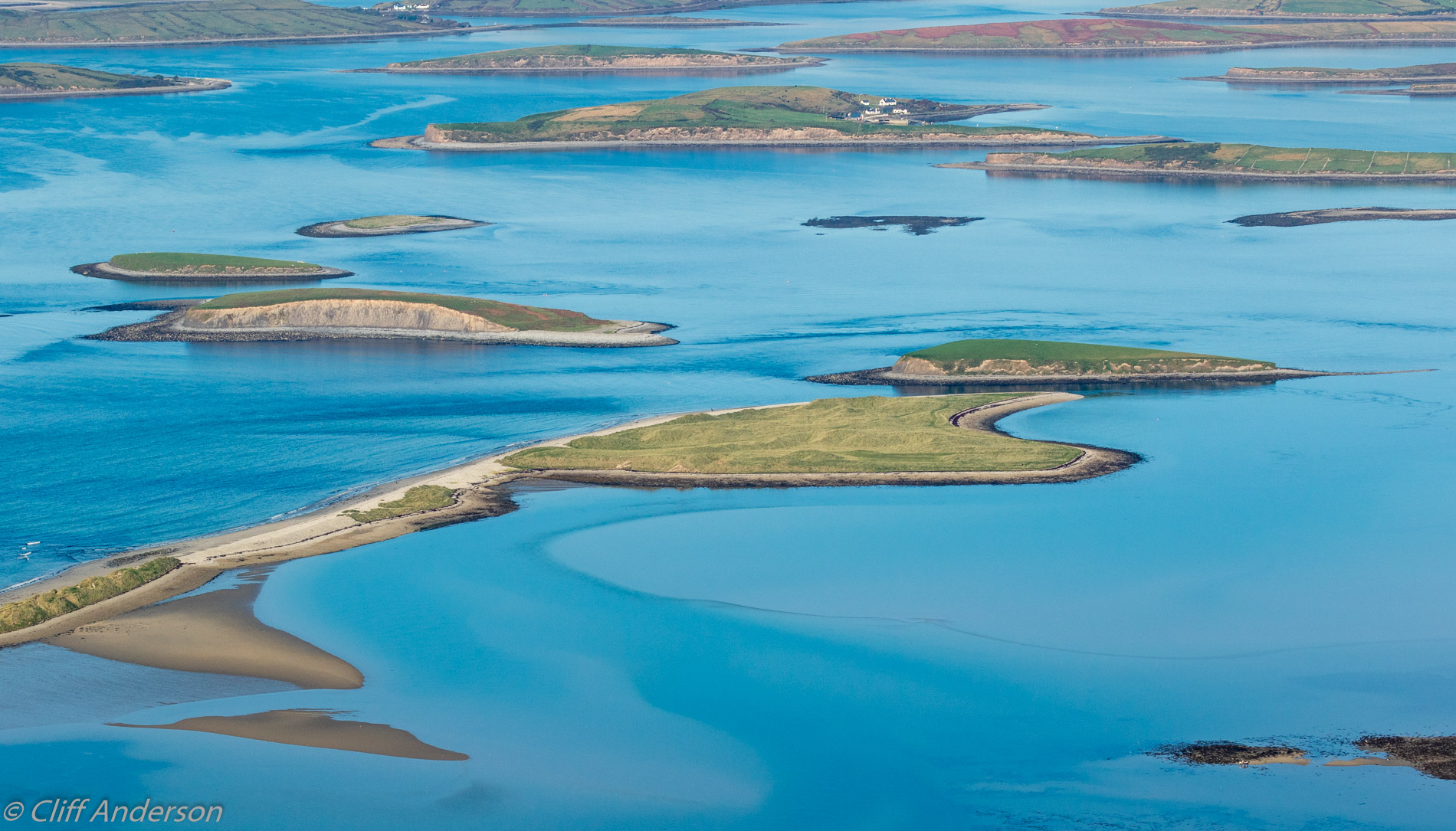
Clew Bay & Baltra Strand from Croagh Patrick
Wildlife around Westport included Great-Northern Loons (which used to be called Divers) and pleanty of waders. A wren foraged continuously in the trees and bushes and around old rusty pillars

Wren at Old Head, Mayo
.All that sea produced lots of Seaweed in a variety of colours and patterns.

Seaweed at Old Head, Mayo
The colours in Ireland in Autumn and early Winter are often taken for granted but it is worth getting out, particularly on those magical, crisp, clear days to walk, look, listen and just soak-up the scenery.

Autumn Leaves Shankill River, Wicklow
Frost appeared early mornings late in the year and that coupled with an enduring cold / flu, curtailed golf a bit but the lakes looked stunning on calm days – the course too with a partial frost covering.

Calm Blessington Lakes from Tulfarris
After Christmas over eating, we felt obliged to take a decent walk and revisited Seefin mountain in the Dublin / Wicklow range. The cairn on top covers a 5000 year old Neolithic passage Tomb and the view from 621 metres up is well worth the strain and cold.

Cairn over Neolithic Tomb on top of Seefin Mountain
A few trips were also taken to fine places in other countries but other posts will have to deal with those as it’s time to wish everyone a
Happy 2017.
Autumn Passing


Autumn Colours and Shankill river, Wicklow
Didn’t seem to last long but Autumn has given way to Winter. While the weather was good this year, already the temperature has taken a dive. Hopefully the great colours of the falling leaves were enjoyed by many.
.
.
It was a busy time in many ways. Apart from loads of photos to be takem, an old oil tank acting as a coal bunker needed to be removed (partly to make way for a new Water Butt and auto solar-powered watering system – but that’s another story) and it revealed a teeming environment of ‘low life’.

Snails, slugs, spiders and other creepy crawlies behind old bunker
Not everyone’s cup of tea, so to speak, but it’s amazing what lives and dies beyond our normal gaze.
.
Interesting contrast between these two pictures, don’t you think!

Young Moorhen scavenging – St Stephen’s Green Dublin
.
.
Autumn is the time that many young birds start to fend for themselves, entering another dangerous period of their short lives.
Moorhen often feed on droppings and other bits and pieces lying around as this young one was in St. Stephen’s Green, Dublin.
.
.
.
.
.
.

Great Northern Loon or Diver, Clew Bay, Mayo
.
.
.
Autumn is also one of the main migration times as thousands of birds leave and arrive in search of more suitable conditions. Twitchers will have been covering the miles to catch sight of unusual birds and rarities.
If not at the twitcher stage, it is still worth looking out for birds and sea creatures from our

Red-throated Loon, Clew Bay, Mayo
shores.
We recently saw both Great Northern and Red-throated Loons while strolling along the beach in Clew Bay, county Mayo.
Theses used to be called Divers in Europe. They were in transitionary plumage – half way between breeding and Winter plumage.
Loons or Divers are large duck-like birds sometimes confused with cormorants from a distance. They can stay underwater for a few minutes at a time during which you need to predict where they will surface.
.
.
.
.
.

Rut Master calling in woods of Phoenix Park, Dublin

Younger Fallow Deer Stags practice fight, Phoenix Park
Autumn and early Winter is the rutting time for some deer species in this part of the world.
Right on Dubliners’ doorsteps, the Phoenix Park hosts several groups of Fallow deer. They have been there for a few hundred years since they were placed for the hunting classes.
During the rut, Stags compete to have mating rights with groups of does. This involves a lot of posturing, gutteral calls and some fighting using their prodigious antlers (which while impressive and photogenic, otherwise seem to be a bit of a nuisance, catching in grass and branches).

Rut Master Stag with Does, Phoenix Park
Damage is sometimes done but mostly common sense prevails and the strongest (or most confident or biggest bluffer) prevails.
Fights can be witnessed – they often take place in the woods while the does sit and wait in the fields. Young stags also practice fight which is a much more relaxed affair.
It is not a good idea to approach too closely at this testosterone charged time. Indeed too many people get too close all year to animals that should be left wild. Many also feed them bread, Mars bars and all sorts of stuff best left outside the park.

Red Toadstool – Fly agaric – Clara Vale, Wicklow
.
This is what it is all about – a contented if tired stag with ‘his’ hopefully content and fruitful does!
.
.
.
Plants usually provide the most colourful and showy Autumn sights.
But it is not just the dying leaves – whose often brilliant colours are caused by the closing down of chlorophyll, resulting in the green leaves changing to a range of yellow to orange and red colours – that are notable.
Many plants show confident colour at this time. For example Crocuses and shrubs such as Verbena often flower brightly and some with lovely scent.
Mushrooms also can be colourful although generally in nature, the most colourful are the most dangerous! This one is said to be poisonous although rarely seems to kill humans. It also has hallucinogenic properties.

Curlew & Godwits against morning sun, Baltra beach,Mayo
Finally, this is the season of the wader. Coasts everywhere are greeting larger and larger flocks and Geese and Swans are on their way, including ‘ours’, hopefully.
.
The message as always is if you can get out there, well, GET OUT THERE.
Happy Winter
Goodbye Lizzie, Hello Caoimhe
Looking like a small alien blob, it takes a while to recognise the tiny baby birds huddled together for warmth in a small nest.
In previous years Lizzie had rared families of Blue Tits but last year our camera nest box stayed idle, despite a brief bout of grass depositing.
This year we hadn’t seen any movement near the box and on the infrequent times we had checked the video, there was nothing happening, although again, some grass had been collected early on. This month we checked again just to be sure there was nothing there. In another nest box, with no camera, wasps had built a nest a few years back. Anyway we were surprised and delighted to realise that not only was there a nest but there were eggs – very small oval shaped eggs with few markings and a slight pink tinge, although this could have been caused by the light reflecting off the wooden box.
Only about a week later, we saw one of the birds seemingly breaking an egg. But as she moved, the strange outline of a fleshy, scrawny, awkward baby could be seen. The parent was actually getting rid of the broken egg.
Now there are at least six babies. There could be 7 or even 8 – they tend to sit on each other in the confined nest hollow. There were 8 eggs, so maybe all hatched safely – more to find out!
Welcome Caoimhe.
Winter Birds

We’ve had frost, snow, winds and rain but it hasn’t been a bad winter so far.
Of course golf hasn’t always been possible!
.
Birds have had a mixed time. There has been a good deal of wild fruit on trees and on the ground and people these days put out more food in gardens.
On the other hand, some of those aweful shrubs with ‘lasting’ berries (meaning that birds don’t like them, which makes them close to useless in my book) have begun to see some bird harvesting.
.
Whooper Swans and Greylag Geese still visit the fields beside our garden.
See previous post – ( https://wordpress.com/post/14866330/2493/ )
.
.
In the garden, Fieldfare and Redwing arrived in December.
These thrushes are in the same family as the more familiar Song Thrush, Mistle Thrush and Blackbird but arrive in some numbers here only in winter from Scandinavia.
They are definite signs of cold weather if that’s not already obvious.
The Fieldfare is pretty much Mistle thrush size and has a grey look.
.
.
.
.
.
.
.
.
.
The Redwing is closer to Song Thrush size and appearance but has a red patch under its wings.
Both can be a bit shy and scare off easily.
.
.
.
.
.
.
.
.
.
.
The Fieldfares love the fallen Crab Apples in our front garden. Strangely we usually get a bumper crop of these every second year and were not expecting them again this year. They still came and fell in large numbers which attracted the Fieldfares as well as the more common and less shy Chaffinches and Blackbirds.
.
.
.
.
.
.
.
.
.
.
Down at the lakes I heard and then saw a large flock of Goldfinches (Charm, Drum or Troubling of Goldfinches according to ‘Birds of Ireland, Facts, Folklore & History). There must have been at least 50 birds making quite a racket as they attacked the cones high in the Larch trees beside the lake. They moved quite fast, making them difficult to photograph and showed good agility.
.
.
.
.
.
.
.
.
.
.
Also close to the lake, a flock of Long-tailed Tits flitted amongst the trees
They also move quite fast and don’t stay in one tree too long.
It is an unfortunate fact that Ireland has a much smaller number of bird spesies than the UK – who in turn have a much smaller selection than the continent. We miss out on some really cute members of the Paridae family, such as Crested, Marsh and Bearded Tits.
However the Long-tailed is one of the most beautiful birds in Ireland with its long tail and pinkish feathers.
Its nest if you ever find one (not easy), is beautifully constructed in a tree from moss and spider webs, with a small entry hole – something to keep an eye out for in spring.
.
.
.
.
.
.
.
.
.
.
.
.
.
Finally, checking out the lake near Russborough House, this Heron was happily fishing away. He (or she) didn’t seem to be catching anything large but seemed to have plenty of small successes. The prey looked like insects.
Hopefully the rest of the winter will be as enjoyable.
Whoopers & Greylags at Christmas
They arrived in October this year as most years and apart from some very mild mornings, have enhanced our view from the house since.
A particularly nice sight on a frosty Christmas morning.
Happy Christmas and a brilliant New Year to all.
Harry the Heron

Walking to and from work can be a drudge.
Walking by or preferrably through a green space, can lift the mood and is probably a bit better for the ould lungs! I am lucky to have 3 possible green areas to traverse depending on the path chosen. St. Stephen’s Green in Dublin is one of those and it should already be clear from previous posts, how much I believe it benefits the city and its people.
One of the things that ‘amuses one’ is playing ‘Where’s Harry?’ Harry is a Grey Heron that is commonly seen in different areas of the park and finding where on a particular day is the aim. OK, it mighn’t be rivetting but it beats listening to the news on the radio. Also there could be 100 different Herons but if so they are all considered to be Harry:)
Sometimes he is in the open and easy to find.
Other times he could be somewhere in the large Willow Tree or at the edge of the stagnant end of the pond, at the SE, Baggot Street end.
Harry may not be around every day but he can often be seen although sometimes hard to find.
Other common places include the rocks under the viewing point at the West end and the rocks on the NE side of the bridge. In both of these places he can be very close.
Looking around the rocks a metre or two from the pond’s edge in the middle of the park (S side of the pond) can also be fruitful.
Inactive can be a common theme for Harry, perhaps having a post-breakfast rest.
However if you have time or are lucky, some typical behaviour can be observed.
This includes preening – the systematic cleaning of feathers to keep them waterproof.
Herons can make quite a racket and Harry makes himself very obvious when he calls out.
You may even see him catch a fish – yes there are some fish in the pond and even large eels.
So next time you are in Stephen’s Green, look out for Harry.
New Arrivals

We are often jealous of the bigger variety of wildlife in other countries, even in our neighbours. This includes birds, animals, butterflies, plants, in fact pretty much everything. Of course we are on the edge of the continent but it would be nice to have some more species. The mild climate compared to contintental countries – less extreme weather than England, in fact – offers some compensation.
However, over the last decades, new species have arrived to brighten the scene. There have also been quite a lot of unwelcome additions – plants and animals that out-compete native wildlife and seriously change the balance of nature. Ignoring these alien invaders such as Mink and Grey Squirrels for now, it is great to catch a glimpse of some of the new stars.
Buzzards have been amongst the most successful recolonisers. Persecuted (shot and poisoned like most birds of prey in Ireland) to extinction during the ninetheenth century and early 20th., they made a small and short comeback in the 1950s but dissapeared again with the demise of their rabbit prey – which had in turn been decimated by Myxomatosis.
Making another return in the 70s in the north of the country, it has taken them a long time to spread south. This seems to be down to poisons laid for crows and foxes. Strychnine has been illegal in the north for a long time but was only made illegal here in the 90s.
It is now quite common to see them in many parts of the country including in Dublin and Wicklow. Often they are heard before seen and have quite a high-pitched, ‘thin’ call for such a large bird.
Ironically, it is due to the lack of large predators that Crows and Foxes are so common. More Buzzards should reduce the prevalence of Crows, Rabbits and Rats amongst others.
Exotic is one of the words that come to mind to describe another newish arrival. The Little Egret can now be found around much of the coast as well as in some inland counties, having started mainly on the warmer south coast. Previously they were an interesting visitor but they started breeding in Ireland in 1997.
It is common to see them in estuaries, often with Grey Herons. They also often breed beside large heronries.
Interestingly, other Egrets such as the Cattle and Great, are making more frequent visits to Ireland.
Outshining the Egrets however is the cartoon king, the Great Spotted Woodpecker, which is not actually all that great in size, being little bigger than a Thrush but makes up for this in colour and behaviour. Form being a rare winter visitor, Great Spotted Woodpeckers have been increasing in the last 10 years and breeding was confirmed in Wicklow woodland in 2008.
They seem to be spreading quite quickly and are now seen in Wexford, Dublin and a few other counties. They are really beautiful birds and the drumming sound as they hammer their beaks on trees has to be heard.
The other notable ‘new boy’ in the East of the country is the Red Kite. These have been carefully reintroduced through young birds brought over from Wales where the population has regrown and spread. There were previously Kite reintroduction releases in Scotland and England and the success of these ventures encouraged Ireland’s efforts.
A great addition to our skies, they are more colourful than the Black Kites common on the continent and seem to be doing well.
In the East of Ireland we have still not entertained the magnificen eagles – Golden and White-tailed – which have also been reintroduced in Ireland, in Donegal and Kerry, respectively. This also seems to be going well but is being somewhat twarted by the illegal and dangerous practice of laying out poisoned meat.
Hopefully we will get to see these magnificent flying machines soon.
Another bird that is coming back is the Goosander.
This is a saw-billed duck common in Scotland and spreading down through the UK. It seems to be building breeding numbers here since the 90s although it has been a rare winter visitor in the past.
They are long ducks with red bills. Males are contrasting white, black and green, while the females are reddish brown with a bit of white. They are found on fast rivers and usually nest in a tree hole or under rocks at the edge.
Finally, while not a new bird to Ireland, Jays seem to be increasing quite rapidly and are now not as difficult to see as before. They are the best looking crows – even compared to Magpies and Choughs and it is great to see more of them.
So some good news while habitat still dissapears, poison is laid and global warming increases!
Lizzie’s Lassies at Large
Swans & Cygnets
If you go down to the pond today you’ll see 7 lovely cygnets under the watchful eyes of proud parents.
.
.
.
Despite this, there are large numbers of Mute Swans in Dublin, particularly along the canal!
Lizzie 2013
She’s back. Lizzie, that is.  You remember Lizzie? This blog is about Lizzzie (or Alice and lots of other things!). See https://cliffsview.wordpress.com/2012/07/05/new-creations-what-grows-in-your-garden/ & https://cliffsview.wordpress.com/2012/01/29/lizzie-2012/
You remember Lizzie? This blog is about Lizzzie (or Alice and lots of other things!). See https://cliffsview.wordpress.com/2012/07/05/new-creations-what-grows-in-your-garden/ & https://cliffsview.wordpress.com/2012/01/29/lizzie-2012/
The nestbox has at least 5 and maybe 6 eggs in it. More news to follow.
Hungry Visitor
The Geese are finally gone and Swallows and House Martins are alreadywheeling through the skies, shrieking and endlessly seeking flies. Temperatures are up and there is great activity amongst the birds.
I think that is why a silent spell in the garden made me look out the window. A quick shift in direction of grey wing in the bushes looked different, unusual. Looking closer I was surprised to see a male Sparrowhawk that seemed to have come to feed on the nut-feeding small birds.
Having the camera close as I was about to head down to the lake, I got a few pics through the window, trying not to scare him.
The small birds seemed to have taken refuge in a woody bush and were now giving the vocals the full treatment, while himself, perched on top of the bush, seemed to be wondering how to get in or perhaps just hoping that one of the little ‘uns would make a break for it.
He seemed to be very keen on a meal so I had a go at opening the creaky back door a little and was lucky enough to be tolerated while I got some better shots. Such a magnificent creature, albeit built to kill. Eyes, beak clews, wings – all intended to allow sharp movement and precise, lethal hunting.
Its interesting to note the differences between the sexes – the female (see https://cliffsview.wordpress.com/wp-content/uploads/2011/01/sparrowhawk-f-with-twig-st-annes-dublin-1732xl.jpg) is larger but duller.
Eventually he got fed up – not literally, unfortunately for him – and flew off low along the old hedge.
Fantastic encounter with a stunning creature.
Moving On
 A very brief ‘less cold’ spell seems to have convinced the Whoopers to migrate back north. The Greylags were not so easily fooled and still graze in Willie’s field.
A very brief ‘less cold’ spell seems to have convinced the Whoopers to migrate back north. The Greylags were not so easily fooled and still graze in Willie’s field.
Walking down the Liffey quays towards the lifting bridge, a group of Brent Geese had gathered a couple of weeks ago. They are probably about to, or in the middle of migrating.
It is interesting to note their amazing travels while we lament their passing.
Whoopers typically fly to Iceland and northern Europe from Ireland while Greylags mainly return to Iceland.
Brent Geese, quite common flying over Dublin or grazing on grass fields, including football fields, in the Winter, head for Greenland or Canada.
.
.
.
It seems that when temperatures are beginning to get tolerable for us, the winter migrant birds get hot under the collar and feel the pull for colder climes.
Of course the weather this Winter and ‘Spring’ has been pretty miserable – one of the coldest March months on record.
But spring really is in full swing regardless of the cold and frost. Witness the Crows at their rookeries, the Jackdaws sitting on wires or branches in pairs, not to mention the cute spindly-legged foals and the gorgeous young lambs.
Frosty Birds
 Mid-March and Spring is still springing but the weather has regressed – frost, snow and hail-stones seem to be more common than warming termperatures.
Mid-March and Spring is still springing but the weather has regressed – frost, snow and hail-stones seem to be more common than warming termperatures.
So the Whooper Swans and Greylag geese are still close-by.
The very idea of sitting with your belly on the frozen ground is enough to give the collycobbles!
When the birds move you can see a ‘melted’ space! It can leave a patchwork pattern on the field.

Garden Finches
 Well Spring is gathering pace and the weather is drier. Magpies are very obvious as they build elaborate nests and birds are amorous.
Well Spring is gathering pace and the weather is drier. Magpies are very obvious as they build elaborate nests and birds are amorous.
However we haven’t yet seen the first frogspawn in our Wicklow imitation of the North Pole and the Whoopers and Greylg Geese are still next door.
 We are not, of course, wishing our lovely neighbours would leave.
We are not, of course, wishing our lovely neighbours would leave.  They are brilliant to watch as they shuffle across the fields, making sure not to miss any thick grass and leaving the fields smoother than many lawnmowers!
They are brilliant to watch as they shuffle across the fields, making sure not to miss any thick grass and leaving the fields smoother than many lawnmowers!
It’s more a question of figouring out where we are in the natural order after cold and wet spells.
.
Interest inside our garden was even greater yesterday.
Glorious finches had their day. Hard on the heels of the Bullfinch and Greenfinches of last post (https://cliffsview.wordpress.com/2013/02/05/more-signs/), the sun (and the nut feeder) brought out quite a range of finch beauties, some of which hadn’t been seen too much this year:-
- Chaffinch
- Greenfinch
- Redpoll
- Siskin
- Goldfinch
and a special!
.
.
.
.
.
.
.
.
.
.
.
.
.
.
.
.
.
.
.
As I was getting accustomed to the array of finches battling for position on the feeder (not really a battle when the smaller but quite aggressive Siskin is about!), I thought I saw something different.
Could it be a bird long on my list of wannasees?
Sure was. My first sighting of a Brambling. It was a female in winter colouring, similar to a Chaffinch but a bit more striking without being more colourful.
She didn’t stay too long, A coulpe of short visits was all I got but it has taken a long time to see…. and to find it at home!
Happy Days!




